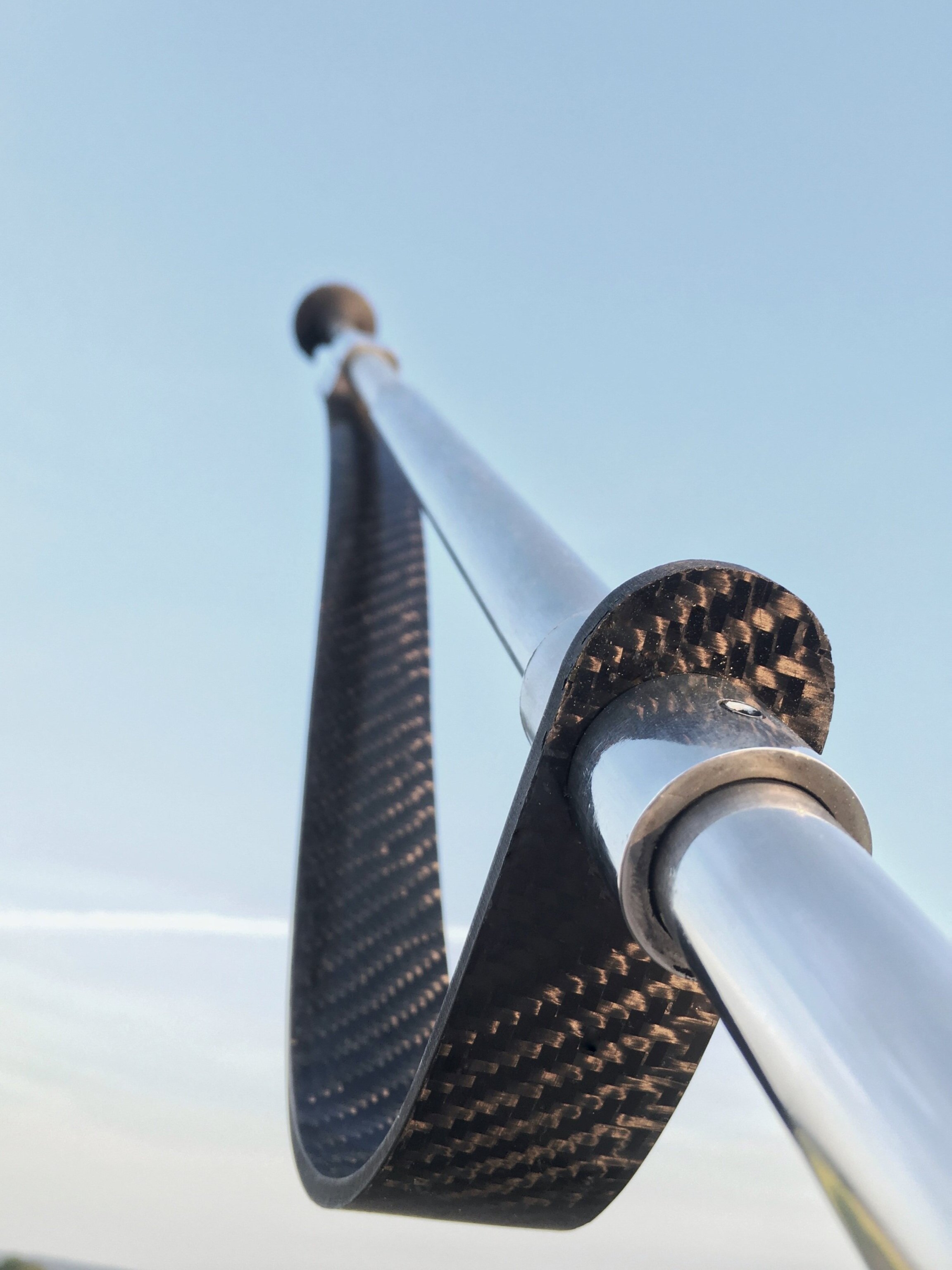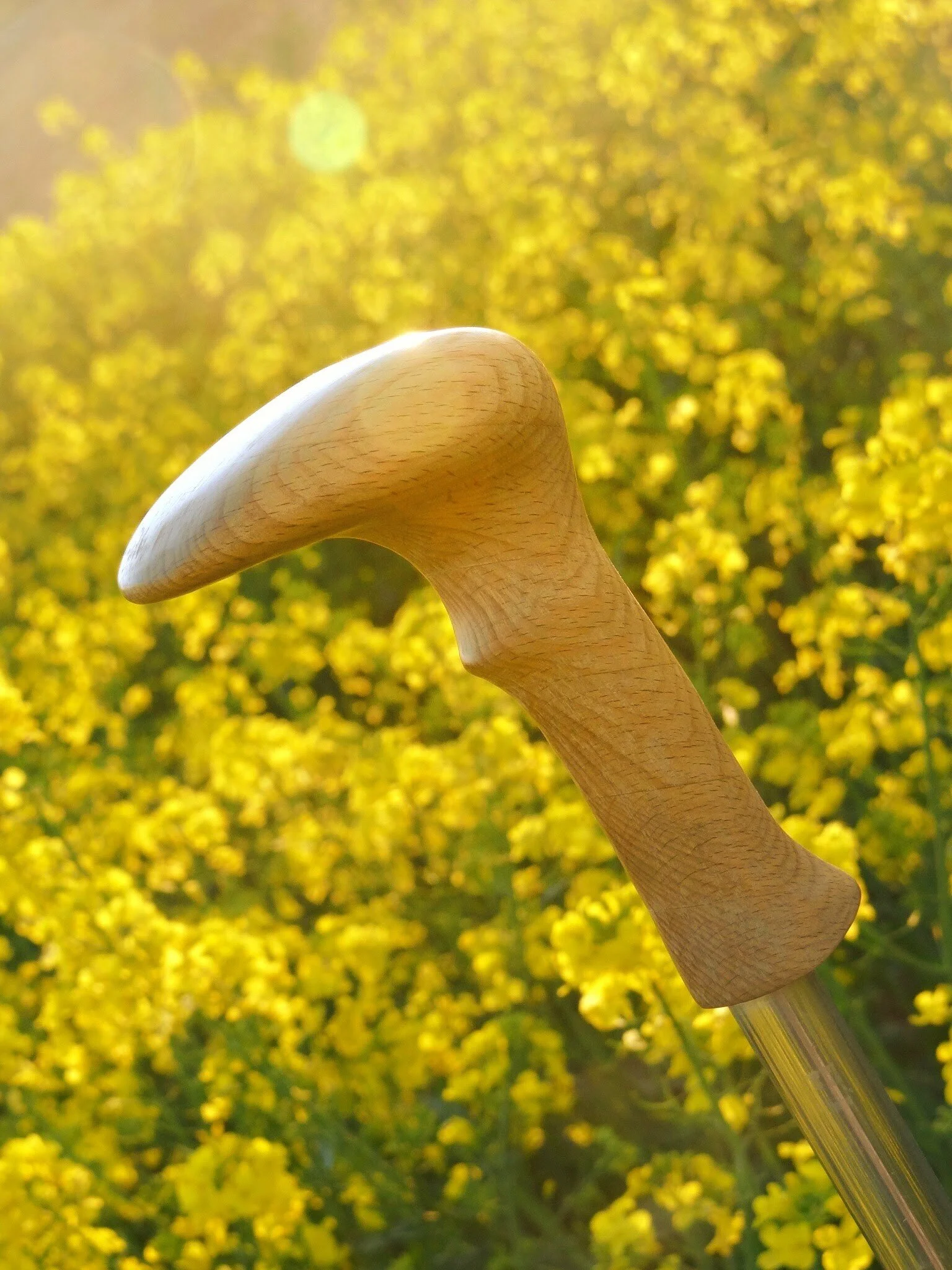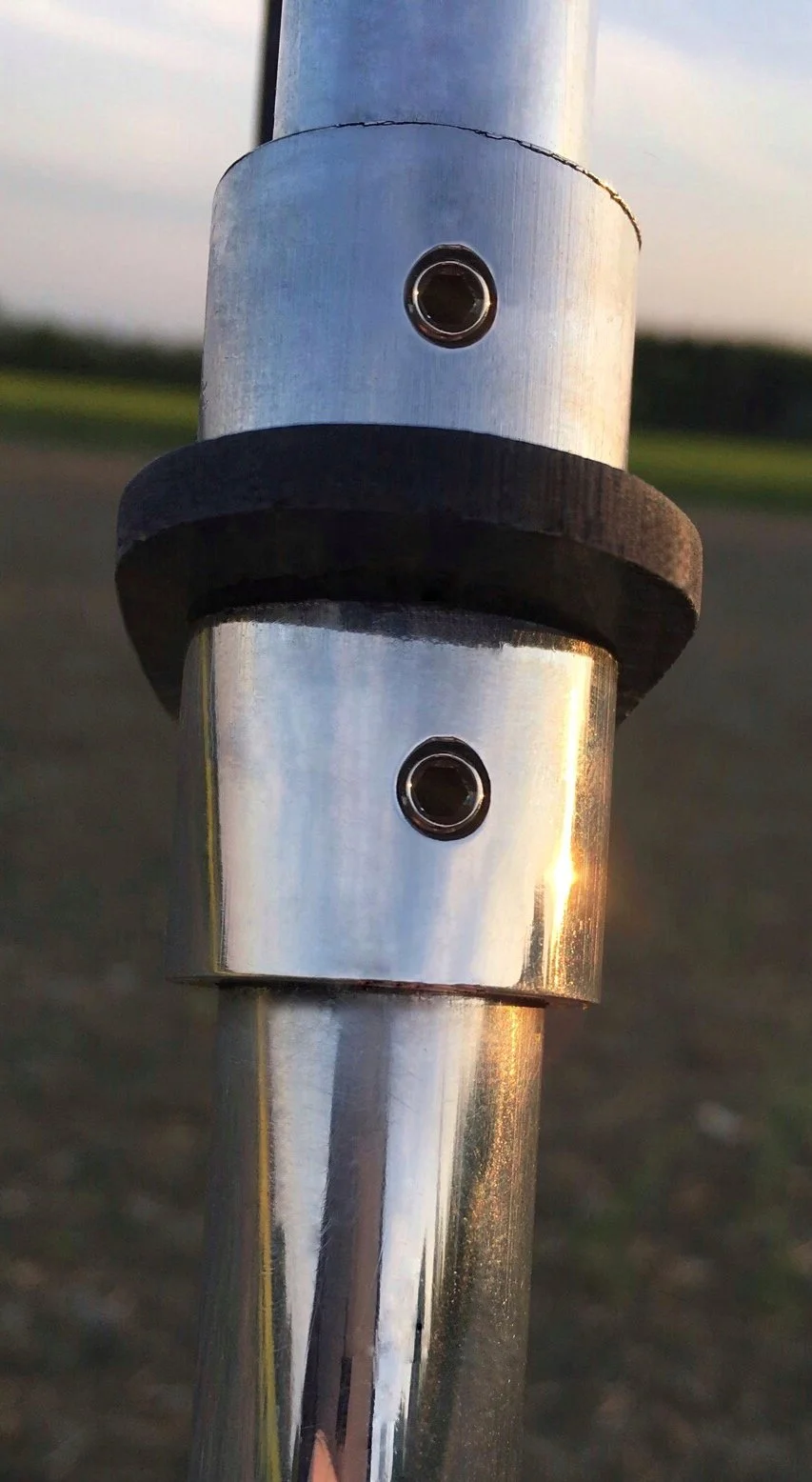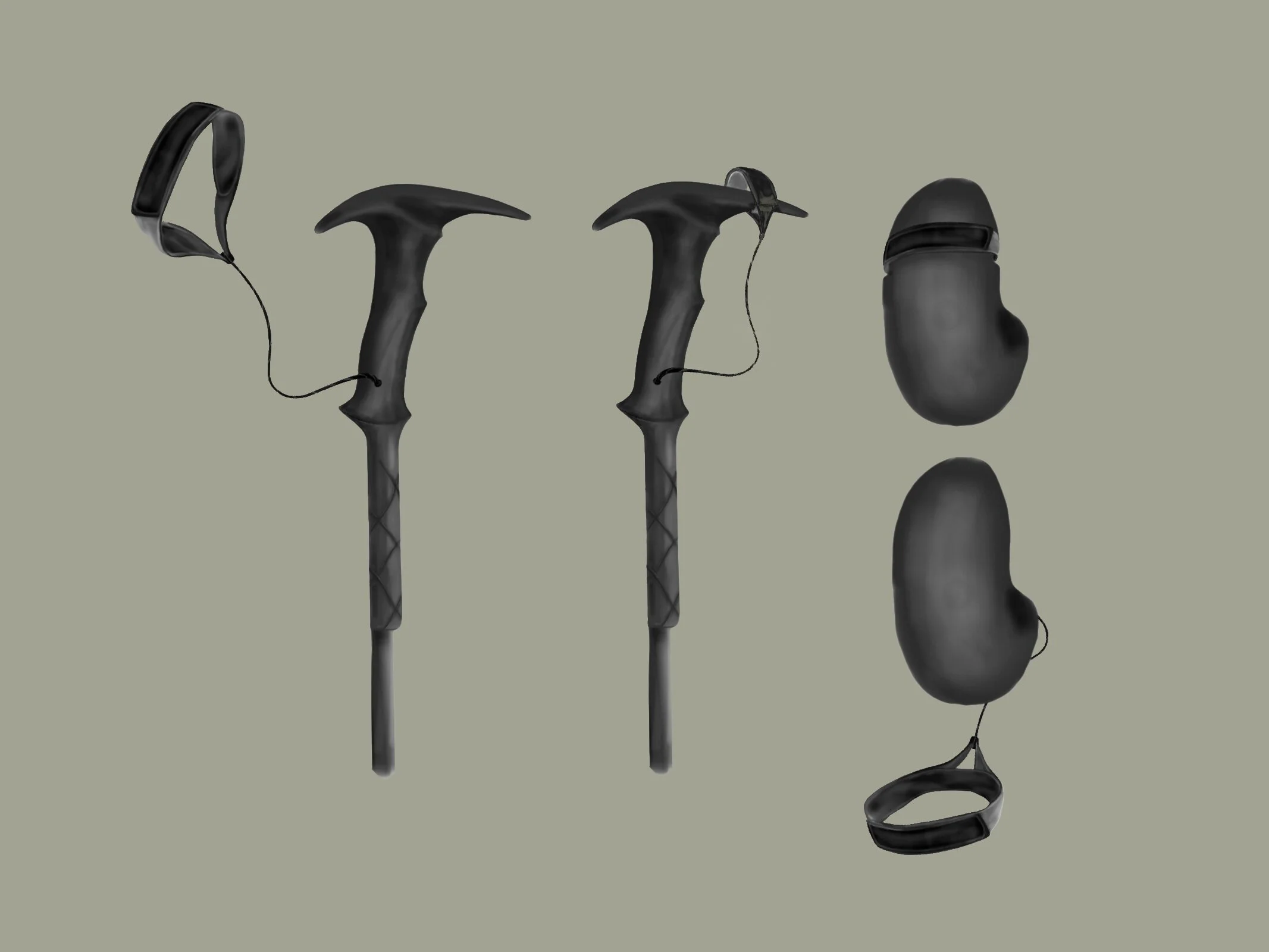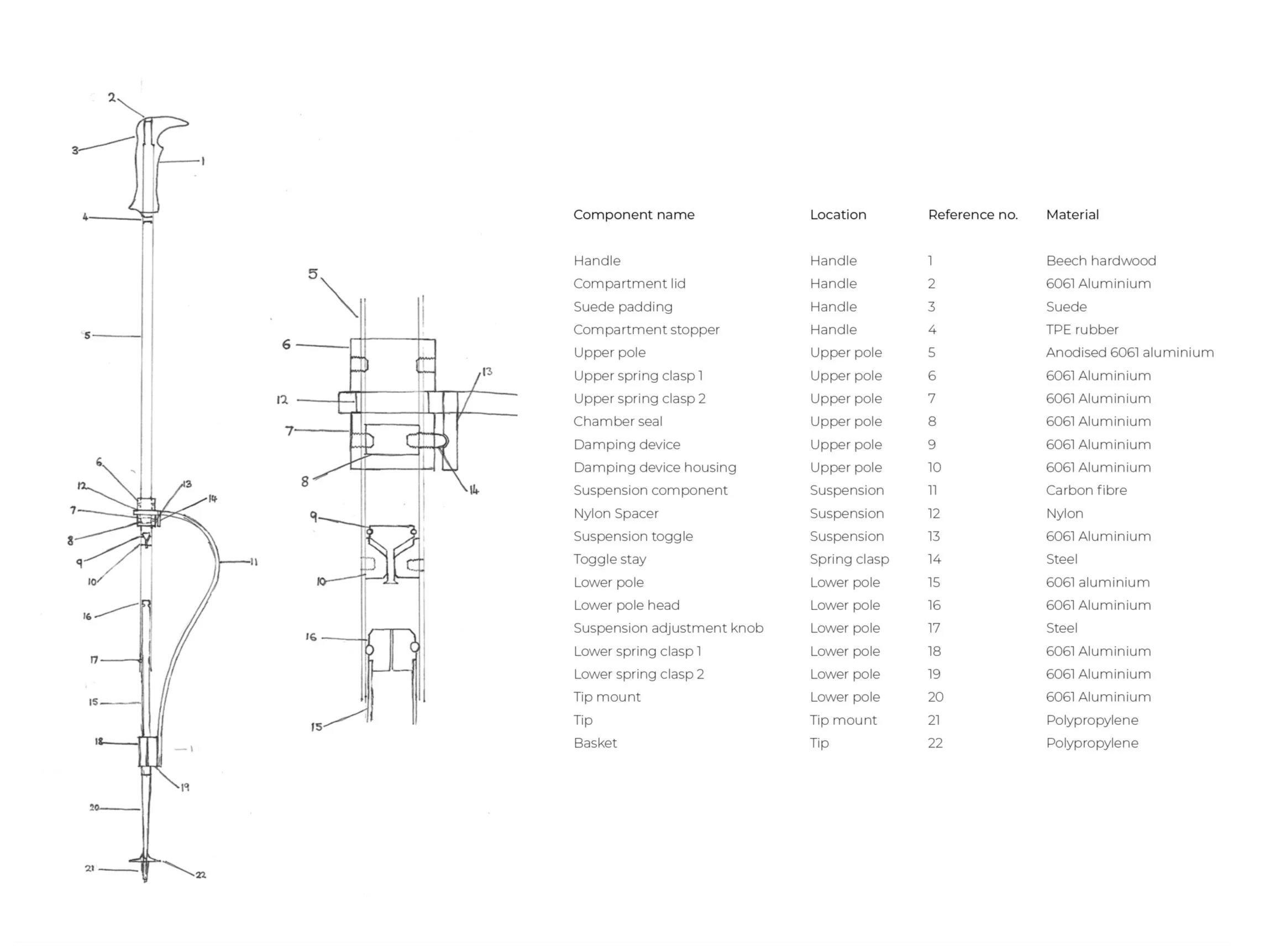
Arthritis trekking pole
Arthritis has many forms, but all tend to cause similar symptoms, including dexterity loss and swelling of the joints. Whilst most symptoms are treatable, external measures of mitigating effects are also necessary. My client enjoyed the outdoors but was worried he could not continue to hike due to developing Arthritis in his hips and hands. Whilst trekking poles helped, the handle shape and vibrations through the pole led to strain over long distances.
The objective was to design a trekking pole reducing strain on the joints without compromising the poles basic functionality. Ergonomics and Anthropometrics played a role in the design of the handle, whilst other ways of limiting joint pain came in the form of a novel suspension element.
Project Type: Consumer
Skills & Knowledge: Design process, Materials Science, Composite Science, Manufacturing, CAD, Ergonomics, Client relationships, Report Writing

An innovative solution, adapting to the context environment
This trekking pole utilises a unique adjustable suspension element and ergonomically designed handle to mitigate the effects of Arthritis in the hips, knees and hands. The design process began by researching where current poles failed and finding solutions to combat the client's adverse experiences.
Repetitive use of poles when walking downhill tend to put pressure on the wrists and hips the most. Poles with suspension are available, offering some yield under pressure but tend not to be used by enthusiasts as they do not provide a stable platform. Some give would, however, be beneficial in certain situations, such as walking on solid ground. A Carbon-fibre component was developed to provide suspension, taking inspiration from a running blade. An internal mechanism restricting airflow through the pole dampens vibrations and kickback by slowly releasing the stored elastic potential energy. Another mechanism allows the user to toggle the suspension to provide a stable platform when required.

A user-centred design approach was adopted for the handle, sculpted specifically for the client by measuring the dimensions of the hand. The large surface area atop the handle allows the user to hold the pole while walking downhill.
A strap keeps the pole in the user's hand without having to grip. Solidworks solid modelling was used as a reference for the client to understand design aspects.
To reduce weight, analysis software determined the mass of components before manufacture. The pole itself required workshop knowledge to manufacture each element, assessing each one against quality control checks.
